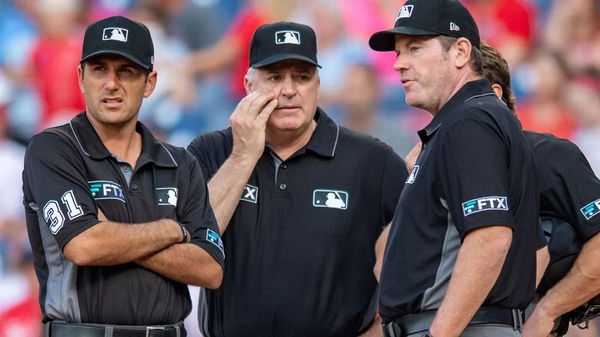

“Change is the law of life. And those who look only to the past or present are certain to miss the future,” as per John F. Kennedy. Certainly so. Since the world has moved into the dynamic spectrum, rigidity has a limited scope. Notably, the oldest professional league in the world, MLB, has understood the same. It has undergone multiple changes to accommodate the demands, including the crucial rules.
Baseball is a sport where rules play a great role in deciding a game’s outcome. This is why the league implements the changes whenever it feels there is a need for improvement. The same is the case with the upcoming season as a new rule coming into existence. But what was the first change that started this all? How much the rulebook has changed since? Is everyone satisfied with that? A look at the past may answer.
ADVERTISEMENT
Article continues below this ad
The Beginning: The First Change That Started the Journey of Change of Rules
There have been a handful of instances in the modern MLB period where the teams have scored 21 or more runs in a game. The reason is ever-improving pitching and defenses, which give close but interesting games. But imagine a team could win only if they scored 21 runs first. Wouldn’t it take more than 5-6 hours on average for a game to finish? Will anyone be ready to accept it today?
Well, to everyone’s disagreement and surprise, this was a rule until 1857, when the nine-innings format came into existence. Although the rule was never part of the MLB’s rule book, the change certainly altered the spectrum of the game. It also saved it from dying, like many changes that the Major League accepted over time. What are the most prominent ones?
An Improved Setup: Big Rule Changes That Become the Core of the New MLB World
MLB, as a league, has seen everything. But few changes have completely changed its shape. It includes standardization of the distance between the mound and the home plate. Notably, pitchers were asked to back foot on a rubber slab 60 feet, 6 inches from home plate. This happened in 1893 but has remained the part of MLB setup, including the current one.
However, not every rule change was accepted. The ban on the spitballs was one of them, which happened in 1920. But it was again changed in 1921, allowing many pitchers to make these balls their trademark. The change was followed by another rule that credited a single run to the hitters. Baby Ruth lost a homer to that rule, but Aaron Judge did not, thanks for the modification. However, this is not all.
Many other modifications are the back of excitement around the league. It includes the inclusion of a designated hitter (1973) and free agency (1975). Both these changes now go hand in hand, and 2023 free agency was no exception with demands for a DH for a team. From an overview, the modifications have found an all-over support. However, the disagreement from the MLB players’ association told a different case.
The Objections: How MLB Rule Modifications Were Unsatisfactory
There is a need for change, no doubt. But it can not happen without an agreement between the two parties. It was the case in 2022 when the MLB’s Competition Committee approved the changes, including restricting defensive shifts, implementing a pitch timer, and using bigger bases. Although it was done to increase the pace, the players’ association was unhappy.
In a statement, they shared,” Major League Baseball was unwilling to meaningfully address the areas of concern that layers raised, and as a result, Players on the Competition Committee voted unanimously against the implementation of the rules covering defensive shifts and the use of a pitch timer.”
Watch this story:-
From Black Betsy to Wonder Boy- Baseball’s most iconic batsThis put the changes into contention where the disagreement on defensive shifts and pitch timer. The reason was that it would impact the pitchers’ health, as they have to pitch fast. It will also affect the defense as the shift is banned with two infielders on each side of the second base and no deeper than the infield cutout. But all the objections died down, and the rule became a part of the rulebook, which has a few more modifications coming up in 2024.
Another Change: What Is the New Addition in the MLB Rule Book for the 2024 Season
Continuing the cycle of changes, the league has approved a few more modifications in the rule book to fast the game. Notably, it includes shortening the pitch clock from 20 seconds to 18, reducing mound visits from 5 to four, pitchers who warmed up have to face at least a batter, and Wider runner’s lane.
ADVERTISEMENT
Article continues below this ad
From the looks, the rules add another grip on the pitchers, demanding them to be faster in their actions. Hence, the players are not happy. MLBPA director Tony Clark reacted to these changes and called them meaning less. In a statement released, he said, “Immediate additional changes are unnecessary and offer no meaningful benefit. This season should be used to gather additional data and fully examine the health, safety, and injury impacts of reduced recovery time; that is where our focus will be.”
ADVERTISEMENT
Article continues below this ad
But the league has accepted this claim. Now, it will be interesting to see how the players react to these on the field. Will they adjust like in the past, or would it amount to a rollback in the future? Only time will tell.
ADVERTISEMENT
ADVERTISEMENT
ADVERTISEMENT
ADVERTISEMENT

